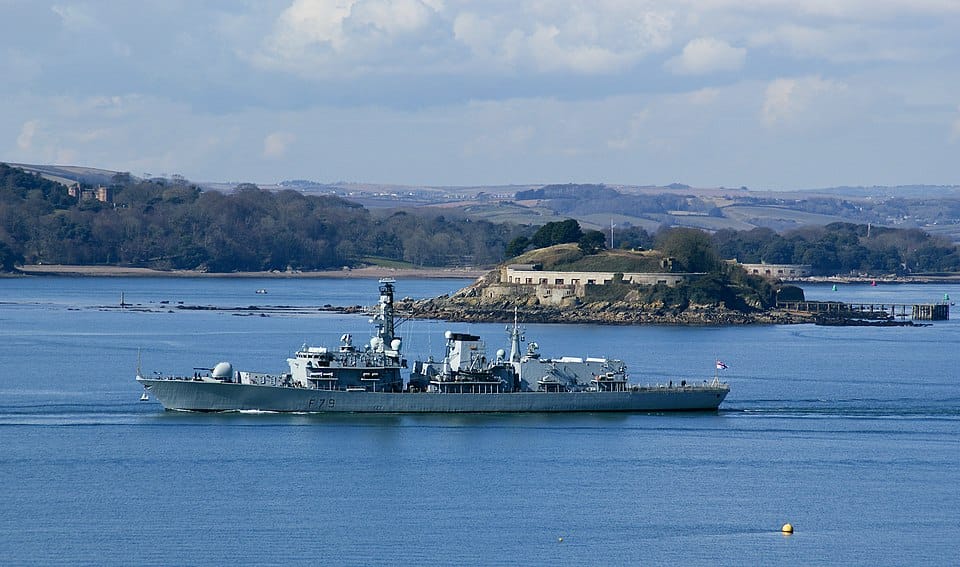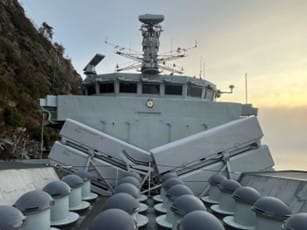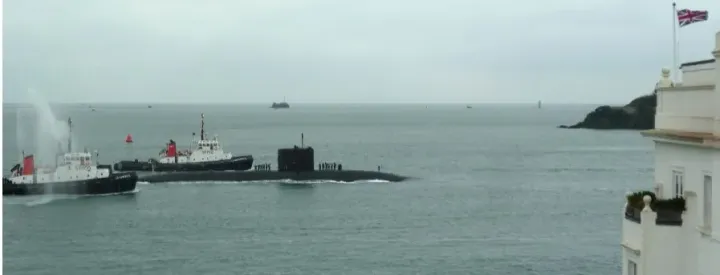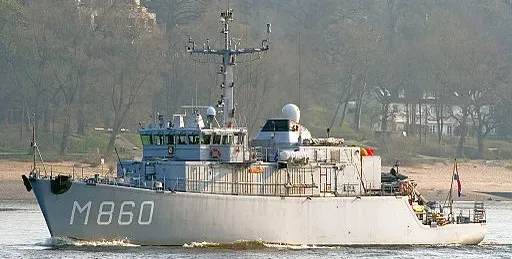A visit to HMS Portland

SCENE ON THE SOUND, by The Captain
I was lucky enough to visit HMS Portland, in the Frigate Complex (more usually known as ‘the sheds’) in Devonport Dockyard last week.
Sixteen Type 23 (T23) frigates were commissioned into the Royal Navy between 1990 and 2003. The original plan was that these ships would have a life of about 20 years and would never have a major ‘half-life’ refit. Unsurprisingly, their replacements were delayed (and still are – the first of the Type 26 frigates, HMS Glasgow, is not due to arrive at her home port of Devonport until 2027). Eight T23s remain in RN service, five have been or are being disposed of and three have been sold to the Chilean Navy.
HMS Portland is the penultimate member of the class and entered service in 2001. It is presently planned that she will run on till about the end of the decade. She was given the new Sea Ceptor anti-air and missile system in her half-life refit in Devonport between 2018-2021. The eagle-eyed will note the empty spaces on the bridge and hangar roofs where the Seawolf fire control radars used to be. Recently, she has also been fitted with the new NSM – the Naval Strike Missile that gives her an anti-ship and land attack capability out to over 100 nautical miles.

Her present work package will update her communication and command and control systems. When she next appears out of the sheds, she will be fully equipped for whatever the changing world brings. HMS Portland is primarily an anti-submarine platform with a towed array passive sonar, active bow sonar (hence the need for an anchor right on the nose) and a hangar that can take either a Wildcat or Merlin helicopter. Both the ship and the helicopters can launch anti-submarine torpedoes. In addition, NSM & Sea Ceptor will give her a very significant anti-air, missile, ship and land capability.
The tour of HMS Portland was organised by ARNO (The Association of Royal Naval Officers) and most of the group were retired naval officers. After the usual processing at Camel’s Gate, we were bussed to the sheds and taken onboard via the flight deck, into the hangar and down to the operations room. The tour finished with a look at the bridge and then a significant amount of ‘reminiscing’ by the ‘old salts’ in the wardroom. It is hoped that the ship’s officers weren’t too bored by all the ‘in my day’ stuff! Many thanks to all onboard for an interesting visit.
The present HMS Portland is the 8th of the name since 1653. Interestingly, the 5th was a barge probably used to defend Plymouth during the Napoleonic Wars. She was purchased in 1795 and was sold on 29 December 1799 for £155, and the 7th was to have been a WWII minesweeper. She was laid down in 1941 and renamed HMS Taitam later that year. The Japanese captured her in 1941 whilst she was under construction, and she became the Japanese minesweeper M/S 101. The Americans sank her in 1945. The present (12th) Duke of Portland is better known as Tim Bentinck or David Archer in the BBC Radio 4 series, The Archers.
PS According to Plymouth City Council, there will be an Open Day in the Dockyard for the general public on Friday 25th July 2025 and for the families of Dockyard workers on Thursday 24th. Exact details of who will be allowed in and how to apply will be published in due course. Watch this space for more information!



